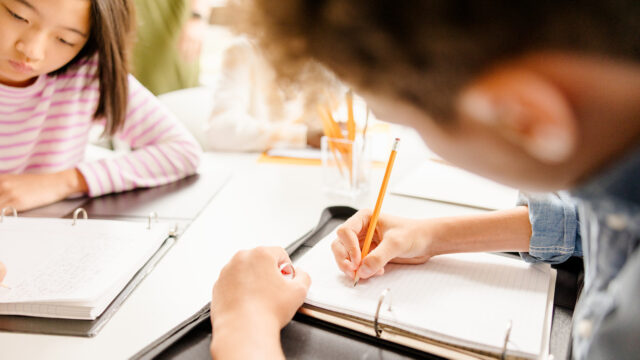
Reading, writing, arithmetic...empathy? Nothing builds a sense of community like collective empathy. Empathy is the ability to understand others’ feelings and needs and is an important skill to model to create an inclusive learning environment. These empathy activities for middle schoolers can reinforce the idea and model good behavior for your students.
Empathy helps to develop many key social skills. Not only does it allow for personal growth, it is also linked to accelerating student learning. Plus, it strengthens the student-teacher bond. There are many reasons to practice empathy in the classroom, and we have a few suggestions for activities to teach empathy to middle school students
Teaching Empathy Activities in the Classroom
1. Imagine Yourself as a Character
Take a cue from your current lesson plan and have students imagine themselves as a historical or fictional character you are studying. This can be a historical figure, like a president, or a fictional character. Ask students to write a short paragraph about themselves as this person. Alternatively, you can have students put themselves in the other person’s shoes and have them write a paragraph about what was going through that person’s mind in a certain situation. What are their challenges? What brings them happiness? Use this graphic organizer below (or one of our many other graphic organizers) to help guide them in their answers.
2. Conduct Class Check-ins
Check in with students daily. Take a few moments at the beginning of the day or of a class period to discuss items of interest happening inside and outside of school. Focus on having students check in with each other, too. The short amount of time invested during a class check-in will accelerate learning and can deepen our personal connections.
3. Empathy Matching Cards
Print out this downloadable, and have your students cut out the cards. Have them match the scenarios to the different feelings. Pair them with another student to discuss their choices and why each scenario might invoke those feelings. Alternatively, you can have a larger classroom discussion by reading the scenarios aloud and asking for student feedback on the feelings, encouraging them to show empathy.

4. "Walk in Their Shoes” Station
Set up a designated space in the classroom to display information about different types of people. These can be newspaper articles, photos of members of the community, or even fictional characters. Post questions near the station that allow students to think empathetically about the subject to practice empathy. These can be questions like: How might this person have reacted to a recent challenge you faced? Why would their reaction be different from yours?
5. “I Feel” vs. Empathetic Statements
Have students test out the difference between “I” statements and empathetic statements. Use the downloadable PDF to guide students to write four of each type of statement. Help them to understand the difference between being empathetic towards another person as opposed to understanding their own feelings and emotions. What are the differences? Why might someone feel differently than you?

6. Write a Creative Acronym
Tie your empathy lessons to your literacy curriculum with acronyms. Take the letters from empathy and ask your students to come up with a description or example of empathy for each letter.
An example for “e” could look like this: E - Everyone’s feelings matter.
7. Take a Trip to the Library
Use class time to take your students to the school or public library. Have students check out a book about a character that displays empathy or a character that is different from them. You can have the librarian pull a selection of these titles ahead of time to point students in the right direction. Once students have chosen a book, have them read it. Set aside time later, once your class has a chance to read their books, and have them go around the room and tell the class how a character in their book showed empathy.
Making sure your students are achieving academically is always top of mind as a teacher. However, taking the time to ensure your students' well-being through skills like empathy will give them helpful lifelong skills. Have some fun with these classroom empathy activities that will bring your middle school students together by learning more about each other.
Be the first to read the latest from Shaped.













